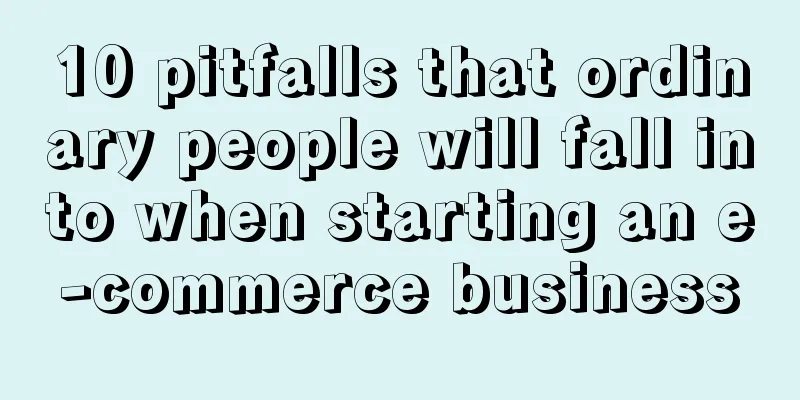Revealed! How do we produce and store popular articles?

Notes are the smallest marketing unit. The higher the quality of the note content, the greater the exposure it will bring to the product. Therefore, it is particularly important to improve, iterate and reuse the quality of note content. To improve the quality of note content, our internal method is called content double circulation; to reuse high-quality notes, our internal method is to build a material library. Combining the two, the content effect will be more certain. 1. Double circulation of content: circling the topicCompared with Douyin, the content of Xiaohongshu is easier to break down and does not involve so many factors. If you break down a graphic note, you only need to divide it into [topic + pain point + communication point]. For topic selection, we can explore and imitate the highly praised natural notes among competitors and categories; for pain points, we can filter out the real feedback from previous purchasing users, and identify user pain points and communication points. After the three elements have corresponding different materials, we can achieve good results by testing the content models that potential users are more concerned about through different experts, feeding back to Xiaohongshu content creation, optimizing the note content, and then continuously amplifying the model with the best effect. The first step in the dual circulation of content is to select the topic. If the process of creating a note is likened to building a house, then the topic is the foundation. How big the house can be and how high it can be built depends on whether the foundation is good enough. The so-called topic selection is to determine the theme, what is the main topic of this note, and what is your core point of view. For example, the topic of my article is "Explain clearly what the dual circulation of content is, why it is important, and how to implement it." There are many notes that do not have a topic, especially those at the lower level and for amateurs. The logic of most notes is "I recently used a product that is very useful. I recommend it to everyone. Reason one, reason two, reason three..." The notes with a topic should be "I had a bad face for several years. After I completely stopped having acne, I realized that if you have acne, you should stick to applying vitamin A and avoid certain foods. This vitamin A was recommended to me by my bestie. My experience with it is one, two, three..." The latter, because of the addition of topics, will attract more audiences with similar experiences. Smart algorithms will help the notes find more people who are troubled by acne. Real experiences and useful content will also increase interaction. Notes with good interactive effects will naturally be distributed more times. Therefore, please pay attention to the topic selection. Without a topic, there is no reason for it to be distributed. How do we find good topics? In fact, Dandelion has long provided us with topic mining tools. We can go to Dandelion → Creative Center → High-quality Content → Popular Notes/High-quality Cases → Notes Category to explore existing high-quality topics in the category. After selecting the category, break down these notes according to elements such as [topic label and rating screening/picture inspiration/source label/illustration/basic data/scene characters]. If you think the number of notes provided by Dandelion is too small, you can also pull relevant notes through Xiaohongshu's third-party data platform, sort and export them according to the amount of interaction, so that you can very efficiently understand which topics in the category have attracted relatively high attention from users. After accumulating a certain number of topics, we will screen out those that deviate too much or are not suitable for copying. We can then break down and imitate the remaining topics. Finally, we can keep 10-20 topics with relatively high popularity and discussion as the first wave of topics for our dual content circulation. 2. Double circulation of content: insight into pain pointsWhat is the pain point? Consumer pain points are urgent demands of specific consumers in certain scenarios because a certain product/service has not yet been met. This is an old topic, so I won’t discuss it here. The key point is, how do we find the pain points of consumers? 1) Off-site e-commerce comment area/ask everyoneOnly consumers can represent consumers. The brand perspective is completely different from the consumer perspective. When we are the brand owner, we only see the advantages of the product. However, consumers do not know every similar product well. They will only choose the one they think is the best. Therefore, please actively pay attention to the voices of consumers. The comment section of e-commerce and asking everyone are very important channels for gaining insights into consumer pain points. The e-commerce review section is full of reasons given by existing users as to why they chose/why they would no longer choose this product. Asking everyone is the most concerned issue before purchasing. If you really can't tell what consumers care about most, you can export all the good and bad reviews and questions, sort them by the number of keywords, and find the product feature that most attracts consumers and corresponds to the consumer pain points. 2) Station water notesIf the product is not new and has a certain basic sales volume, please be sure to check the "tap water" notes on the Xiaohongshu site. If the notes are shared spontaneously because of a pleasant user experience, be sure to carefully record the reasons why the consumer was satisfied. If you post a note complaining about a product because of a poor user experience, you should also analyze the reasons that led to the poor experience for consumers so that you can iterate the product to a better level. At worst, you can avoid this problem during the dissemination process. 3) On-site keyword dataIf you were a consumer, how would you search on Xiaohongshu? Assume first, then verify. List all possible search words, and then verify them through the focused keyword search index. The ones with higher search rates must be the main pain points of consumers. There are several communication cases with consumer insights at the end of the article, remember to check them out. 3. Double loop of content: loop testingAfter we determine the topic and pain points, we can use horse racing testing to find the most efficient content model. Experience is the foundation, and truth is tested. No matter how confident you are about the content, it still has to be tested in horse racing. The testing process can be divided into three stages, corresponding to high reading rate, high interaction rate, and high return search rate. Interaction and return search are both important data for verifying the effectiveness of seeding. The two data may correspond to completely different materials. Only after multiple rounds of testing can we verify which content model has better interaction effect and which content model has better return search effect. In short, the horse racing test can help us narrow down the scope of high-quality topics, and the interaction in the comment section of the notes participating in the test can also help us further identify pain points. The iteration of topic selection and pain points will feed back into the content model, helping us to continuously optimize the content of notes and continuously amplify the dissemination and planting effects of notes. Let the note data verify the quality of the content and make the recommendation process more rational. IV. Content Library: Pre-entry EvaluationWe must first evaluate the overall quality of the material, mainly from the three aspects of quantity, form and quality: 1) Number of materials Take inventory of the current number of materials to see which part is still short of quantity and fill in the gaps in time. 2) Material form Currently, the materials used in Xiaohongshu can be roughly divided into the following categories: graphic materials, cover materials, title materials, video materials, etc. For different content types, bloggers can further subdivide them according to their own creative habits to facilitate the screening of materials. For example, if we break it down into specific categories, picture materials include horizontal version, vertical version, cover, end page, etc. The same is true for material breakdown in videos and copywriting. It is necessary to specifically subdivide the forms of the materials, and then evaluate the different forms, and then determine the style of content production accordingly. 3) Material quality When screening material quality, there are mainly two aspects of screening. One is to confirm the quality of the material content, to determine whether the material content is complete, whether the usage permissions are enabled, whether there are any problems with video or picture quality due to compression, etc. On the other hand, it is necessary to confirm the current delivery status of the material and comprehensively analyze the current delivery number of the material to avoid material squeezing due to repeated delivery of a certain content in the same time period. 5. Content Library: Organize Materials by Labels1) Library content categoriesFirst, I recommend that your library contain the following:
2) Material labelingAfter having a huge amount of materials, how can we choose accurately when using them? Here we need to classify the materials and create labels. The labels of the materials must be accurate and meet our usage needs, so they can be labeled according to usage habits. The content of the label mainly includes two aspects: 1) Purpose of use For the purpose, tags should first be easy to find, so that we can match the relevant information at a glance when we want to use it. Therefore, the label must first indicate basic information such as the product, usage scenario, nature of the material (soft advertising, hard advertising, plot), and production time. In addition, the label should also indicate the effect of use. After the delivery is completed, it is necessary to timely count the delivery data of the materials and label them according to the delivery quality, so as to more intuitively understand the market acceptance of a certain industry/product for a certain type of material and continuously optimize the subsequent delivery. 2) Use phase The label should also indicate the stage of use of the material. Different products have different material content requirements at different stages of launch. And as the product continues to iterate and upgrade, the core scenarios in which the product is displayed to users will also change, and the labels should naturally change accordingly. But in general, the design of labels should be flexibly formulated according to the team. For a smaller operation team, the label setting does not need to be too detailed, as long as it can meet basic operation needs. In short, material labeling is undoubtedly a good way to improve material management efficiency, but the above content is not a specific label indicator, it is just for reference. In specific operations, you should still consider it flexibly. 6. Content Library: Combination of MaterialsWhen creating content, a single source of content will definitely not be able to meet our creative needs, so we need to consider multiple factors comprehensively. What is the user group of our content output? What are their usage scenarios? What are their usage needs or pain points? Therefore, we need to select different video content types according to different groups of people, different scenarios and different needs, match them with corresponding material elements, and produce corresponding new content. Normally, when we create a new content, we will select N different materials and combine them in no order to try to generate new sparks. These contents may be complementary to the old and the new, utilizing the positive feedback data from the old materials that have already been released, and combining them with new materials to bring the old together and achieve complementary advantages. Here are two simple formulas for matching title materials (for reference only): Audience + Scenarios + Products As shown below: Title: Gentle and light color series (target group), are 24 lipsticks (products) enough? Visual cooling in summer (usage scenario). Product category + pain point description As shown below: Title: A collection of 9 big-name lipsticks (product categories) suitable for autumn and winter! Temperamental and whitening (pain point description) color numbers! 6. Content Library: Material SynchronizationNote: Building a material library is not a one-time thing. After each creation and release, data analysis must be conducted on the released materials, and materials with good data performance must be selectively disassembled and retained, while materials with poor data performance after repeated testing must be cleaned up in a timely manner. In daily work, we should also strengthen the supplement and maintenance of the material library, update the material content in a timely manner, match the needs of hot spots, keep up with the industry trends, so that the material library is often used and updated to better match the needs of creation. It is recommended that you build your material library on platforms such as Feishu and DingTalk that enable multi-person online collaboration. In this way, whether it is a cooperative organization, cooperative expert or internal synchronization, they can all collaborate efficiently by opening different permissions. above. |
<<: Why can Coca-Cola transcend cycles but Zhong Xue Gao can’t?
Recommend
Xiaohongshu, Video Account, and Douyin traffic algorithm mechanism, it is recommended to collect it!
Traffic algorithm mechanism is a very important pa...
ROI is nearly 15, new customer rate exceeds 70%, the accelerated growth and long-term test of B station e-commerce
In recent years, as a well-known bullet screen vid...
The i people and e people are not over yet, why are the strong people and the weak people starting again?
After i-people and e-people, new personality categ...
The exquisite moms on Douyin are really attractive!
Introduction: The deep integration of the e-commer...
After watching the World Cup, there are still many good copywritings to read
The charm of football is not only in winning the g...
Outdoor advertising copywriting, writing it this way is more "friendly"
A good copy should be able to attract the attentio...
The "dark operations" of Xiaohongshu that you don't know about
It is said that Xiaohongshu is the most difficult ...
What level does shein belong to? Is shein considered a large company?
Shein is a fashion e-commerce brand that has been ...
Xiaohongshu’s latest hidden function starts stealing WeChat traffic!
Xiaohongshu recently launched a new feature that a...
After writing 1,000 popular articles on Xiaohongshu, I summarized these popular article routines
Creating a popular article on Xiaohongshu is often...
How many brands have been killed by the “suspension of updates on Weibo, WeChat and Douyin”?
Previously, "suspending Weibo, WeChat and Dou...
How much money can you make by using the “Quick Version” APP for a day?
In recent days, many people make money by using th...
Is the fob price in USD or RMB? What fees are included?
If you do cross-border business, you need to under...
What is the method to enter Meikeduo without turnover? How is it?
Now many friends want to do e-commerce, and now ev...
Practical application of the crowd reverse funnel model
In the wave of digital marketing, Xiaohongshu has ...









